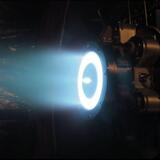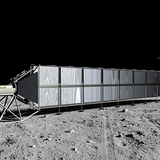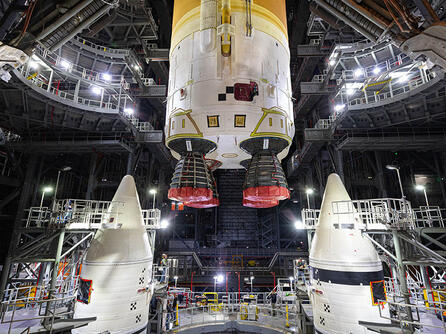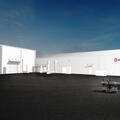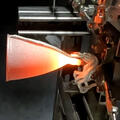Fission Surface Power Technology: A Game Changer for Space Exploration and In-Space Maneuverability
L3Harris Technologies is working to develop a nuclear generator solution to power lunar and Mars surface operations as part of NASA’s Artemis program. This technology could also revolutionize spacecraft propulsion and power for deep space missions.
“Nuclear propulsion can power exploration to the farthest reaches of the solar system and beyond, enhance national security, and enable groundbreaking discoveries,” said Kristin Houston, President, Space Propulsion and Power Systems, Aerojet Rocketdyne, L3Harris. “In-space maneuverability has long been a limiting factor for the most ambitious robotic exploration and other unique government applications, and L3Harris is committed to removing that constraint.”
Fission Surface Power
L3Harris recently teamed with Westinghouse in Cranberry Township, Pennsylvania, on a Fission Surface Power solution under a phase 1 contract from NASA and the U.S. Department of Energy. Phase 1 of NASA’s Fission Surface Power Project focused on developing concept designs for a small, electricity-generating nuclear fission reactor that could be used during a future demonstration on the moon and to inform future designs for Mars.
The system L3Harris and Westinghouse designed during Phase 1 uses a nuclear-powered reactor capable of generating 40 kilowatts of power, sufficient to continuously power 30 households for 10 years.
Nuclear Electric Propulsion
Similar to the Fission Surface Power solution, a nuclear-powered reactor coupled with the Advanced Electric Propulsion System (AEPS) built by L3Harris for NASA’s lunar Gateway would provide significantly increased maneuverability for spacecraft exploring outer planets, where the ability to generate electrical power from sunlight is limited. This Nuclear Electric Propulsion (NEP) system is also ideal for spacecraft requiring continuous, uninterrupted high power sufficient to maintain the spacecraft’s instruments and communications systems.
L3Harris has recently delivered one of three 12-kilowatt AEPS Hall thrusters that will provide propulsion for NASA’s Gateway, a lunar-orbiting space station scheduled to launch in 2027. This outpost is intended to provide a sustainable lunar orbital presence and to stage astronaut missions to and from the Moon’s surface. The AEPS on the Gateway Power and Propulsion Element, which will be the most powerful electric propulsion system ever flown, will deliver the Gateway to its operating orbit around the Moon and maintain its position.
L3Harris electric propulsion systems are more fuel-efficient than chemical thrusters, making the technology attractive for orbit-raising, orbital station keeping, and other missions that do not require high-thrust maneuvers. Over time, they can accelerate spacecraft to tremendous speeds with minimal fuel consumption. On NASA’s Dawn mission to the main belt asteroids Ceres and Vesta, the electric propulsion system imparted more than 9 km/s to the spacecraft – exceeding the amount provided by the Delta launch vehicle that got it into space in the first place.
On the Gateway, the AEPS will rely on solar power for electricity to excite, or ionize, its xenon fuel, which is accelerated via electrostatic means to produce thrust. The system can readily accept electric power generated by a nuclear power system.
“For a Nuclear Electric Propulsion system, we don’t need to change the reactor or the power conversion system,” Houston said. “We just need to optimize the radiators to reject heat into space and put electric propulsion systems like AEPS on the other end.”
Nuclear power eliminates the need for large solar arrays. The high efficiency of the Fission Surface Power system is well-suited to meet future Mars surface power demands while providing a path toward a NEP system for deep space missions and orbital maneuverability.
Deep-space spacecraft today rely on an initial burst of chemical propulsion provided during launch and gravity assists from planetary flybys to reach their destinations. Once in orbit around a distant planet, a spacecraft’s maneuvering options are severely limited – NASA’s solar-powered Europa Clipper will remain in Jovian orbit and observe Europa closely only when their orbital paths cross.
NEP would allow a spacecraft to move from Jupiter’s orbit to Europa’s orbit and other moons of the gas giant.
Nuclear Thermal Propulsion
Nuclear Thermal Propulsion (NTP) can further enhance strategic mobility by providing faster and more efficient transportation versus chemical propulsion, enabling quicker deployment and repositioning of assets in space. This capability is crucial for maintaining a strategic advantage and responding rapidly to emerging threats.
Furthermore, a nuclear fission reactor, which is far more powerful than the radioisotope thermoelectric generators on many of today’s deep space missions, could support energy-intensive spacecraft systems.
L3Harris, with its proven expertise in power and propulsion solutions, is well-positioned to advance space nuclear power and propulsion systems. By building on its legacy of providing radioisotope thermoelectric generators for deep space missions, L3Harris is ready to meet the challenge and deliver critical nuclear solutions. These advancements will support power-intensive spacecraft systems, enhance in-space maneuverability, and open new possibilities for space exploration, as well as ensure a strategic advantage in the rapidly evolving space domain.


